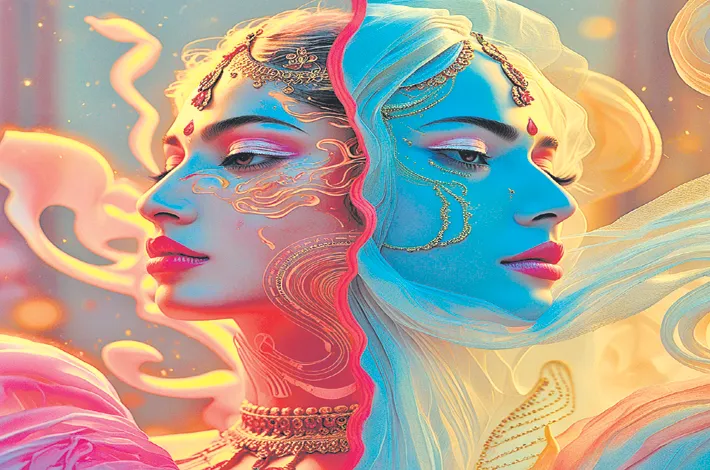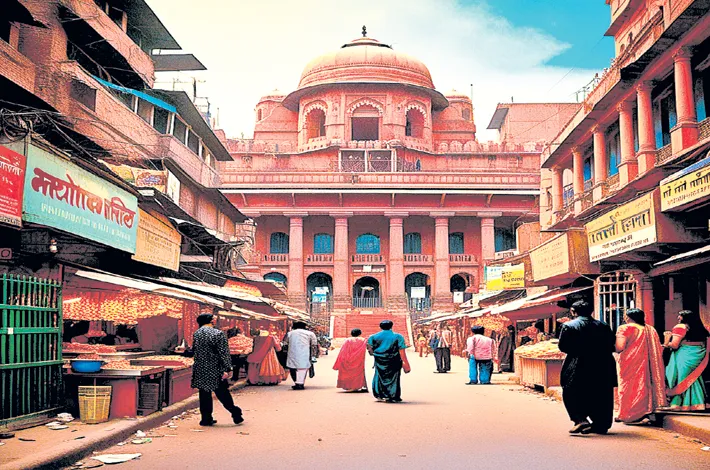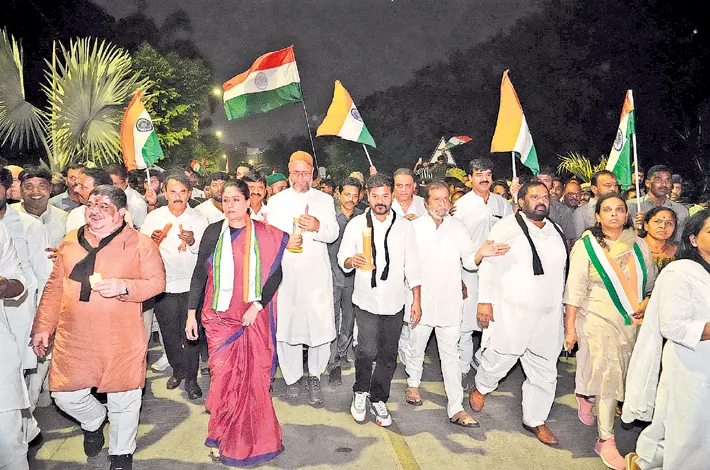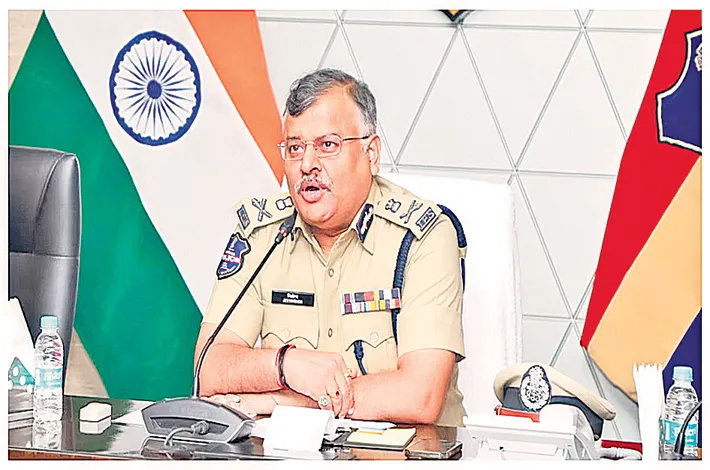The Difference Between Infatuation and Love in the Indian Context
26-04-2025 12:00:00 AM

Conversely, mistaking infatuation for love can lead to heartbreak or strained marriages. In arranged marriages, where couples may not have the luxury of prolonged courtship, families and matchmakers often prioritize compatibility over fleeting attraction to ensure a stable foundation for love to grow.
In the vibrant tapestry of Indian culture, where emotions are celebrated through poetry, music, and tradition, the concepts of infatuation and love hold a special place. Both are powerful forces that shape relationships, but they differ significantly in depth, intention, and longevity. In the Indian context, where relationships are often intertwined with family, societal expectations, and cultural values, understanding the distinction between infatuation and love becomes even more critical. This article explores these differences, delving into their emotional, psychological, and cultural dimensions.
Defining Infatuation and Love
Infatuation is often described as an intense, fleeting attraction characterized by passion and obsession. It is the spark that ignites when two people meet, driven by physical attraction, novelty, or idealized perceptions of the other person. Infatuation is impulsive, often blinding individuals to flaws and incompatibilities. In contrast, love is a deeper, enduring emotion rooted in mutual respect, trust, and commitment. Love grows over time, weathering challenges and embracing imperfections. While infatuation is about the self and personal gratification, love is about partnership and shared growth.
In India, where relationships are often viewed through the lens of long-term commitment, these distinctions carry unique implications. The Indian context, with its blend of tradition and modernity, arranged and love marriages, and collectivist values, shapes how infatuation and love manifest and evolve.
Infatuation in the Indian Context
Infatuation often begins with a rush of emotions, a phenomenon celebrated in Bollywood films and romantic literature. The fluttering heartbeats, stolen glances, and sleepless nights are hallmarks of this phase, vividly portrayed in songs like Pehla Nasha (First Love). In urban India, where dating culture is gaining ground, infatuation may arise from a chance encounter at a café, a swipe on a dating app, or a college crush. In rural settings, it might stem from a fleeting interaction at a community event or festival.
However, infatuation in India is often tempered by societal constraints. The pressure to conform to family expectations, caste, and community norms can amplify the allure of forbidden or unattainable romance, making infatuation feel more intense. For instance, a young person might become infatuated with someone from a different background, idealizing them as a symbol of rebellion or freedom. This is particularly evident in stories of “love at first sight” that dominate popular culture but often fade when faced with practical realities.
Infatuation is also short-lived because it thrives on fantasy. In the Indian context, where relationships are expected to culminate in marriage, infatuation often struggles to withstand scrutiny from families or the test of time. For example, a couple infatuated with each other may overlook differences in values, financial stability, or life goals—factors that carry immense weight in Indian marriages. When the initial euphoria fades, infatuation often dissipates, revealing incompatibilities that were previously ignored.
Love in the Indian Context
Love, in contrast, is a slow-burning flame that grows through shared experiences, mutual understanding, and sacrifice. In India, love is often synonymous with commitment, particularly in the context of marriage. Arranged marriages, a cornerstone of Indian tradition, exemplify this. Couples in arranged setups may not begin with intense passion but build love through patience, compromise, and shared responsibilities. Over time, this evolves into a bond that transcends physical attraction, rooted in trust and companionship.
Even in love marriages, which are increasingly common in urban India, love is expected to align with cultural values. Families play a significant role, and couples must navigate approvals, dowry discussions, and social expectations. Love in this context is less about individual desire and more about creating a partnership that benefits both families. For instance, a couple may fall in love but choose to delay marriage until they achieve financial stability or gain parental consent, demonstrating the maturity and selflessness that define love.
Love also manifests in small, everyday acts of care, a value deeply ingrained in Indian culture. A wife preparing her husband’s favorite meal, a husband supporting his wife’s career ambitions, or partners standing by each other during family crises—these are expressions of love that go beyond the superficial. In Indian philosophy, love is often linked to dharma (duty) and karma (action), emphasizing that true love involves fulfilling responsibilities toward one another.
Cultural Influences on Infatuation and Love
Indian culture, with its emphasis on collectivism, shapes how infatuation and love are perceived and expressed. Infatuation is often romanticized in youth culture, fueled by media portrayals of grand gestures and whirlwind romances. However, societal norms discourage reckless pursuit of infatuation, as it is seen as unstable and potentially disruptive to family harmony. Love, on the other hand, is revered as a sacred bond, often compared to the divine love of Radha and Krishna, which symbolizes devotion and sacrifice.
Religion and spirituality also influence these emotions. In Hinduism, love is seen as a path to spiritual growth, where partners support each other’s journey toward self-realization. Infatuation, while acknowledged as a natural phase, is rarely elevated to the same pedestal. Similarly, in Indian literature, such as the works of Rabindranath Tagore or Kalidasa, love is portrayed as a transformative force that requires patience and understanding, while infatuation is a fleeting distraction.
Bridging the Gap
In the Indian context, infatuation can sometimes serve as a gateway to love, provided it matures into a deeper connection. Couples who start with infatuation may transition to love by building trust, addressing incompatibilities, and aligning their goals. This is particularly true in love marriages, where initial attraction evolves into a committed partnership through effort and mutual respect. Counseling and communication play a vital role here, as couples navigate the complexities of modern relationships while honoring traditional values.
Conversely, mistaking infatuation for love can lead to heartbreak or strained marriages. In arranged marriages, where couples may not have the luxury of prolonged courtship, families and matchmakers often prioritize compatibility over fleeting attraction to ensure a stable foundation for love to grow.
Conclusion
In the Indian context, infatuation and love are two sides of the same coin, each with its own allure and limitations. Infatuation is the spark that captures the heart, fleeting and intense, while love is the steady flame that warms the soul, enduring and selfless. Cultural values, family expectations, and societal norms shape these emotions, guiding individuals toward relationships that balance personal desires with collective responsibilities. By understanding the difference between infatuation and love, individuals can navigate the complex landscape of Indian relationships with clarity, fostering bonds that are not only passionate but also enduring and meaningful.








